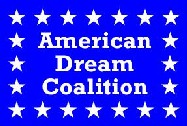
 |
|
The Guide to the American Dream
|
San Jose Planning DisasterSan Jose embodies smart-growth's twin goals of densification and rail transit. Population densities in the city and region around it have nearly doubled in the past thirty years, and the region has built an extensive network of light-rail lines. Yet these policies have resulted in enormous costs and produced few measurable benefits. In 1950, San Jose was a sleepy town of less than 100,000 people. The city's pro-growth government and aggressive annexation policies led to a quintupling of the population in the next two decades. During that time, the city's population density declined from more than 5,600 people per square mile to less than 3,300. The pro-growth fervor led to a backlash, and a less-growth friendly city council drew an urban-growth boundary around the city in 1974. With the support of Santa Clara County, the boundary effectively prohibited subdivisions to the east and south of the city. West of the boundary were other cities, which were either surrounded by other cities or had boundaries of their own. To the north was San Francisco Bay. When the boundary was drawn, planners expected a moderate rate of growth over the next fifteen years. But no one in 1974 anticipated the booming microprocessor industry. Yet when growth proved to be much faster than anticipated, the city made no attempt to expand the boundary. The result was a sharp increase in land prices and housing costs. San Jose housing prices nearly doubled between 1985 and 1990. After leveling off due to a recession, they doubled again from 1996 to 2001. Despite another recession that resulted in the loss of 17 percent of the region's jobs, home prices rose another 50 percent by 2005. Today, a home that costs $100,000 to $220,000 in most other cities costs more than $630,000 in San Jose and even more in some of its suburbs. Land suitable for residential development sells for well over $1 million an acre; the same land in many other parts of the country sells for less than $20,000 an acre. Despite having 75 percent higher per capita income than the rest of the country, San Jose has one of the least affordable housing markets in the nation. Naturally, higher land prices mean that most people have to live with smaller (or no) yards. So San Jose's density has increased to more than 5,000 people per square mile. The density of the San Jose urban area is nearly 6,000 people per square mile, which makes it the third densest urban area in America after Los Angeles and San Francisco. As densities increased, San Jose followed the smart-growth prescription of investing in rail transit instead of roads. San Jose's privately operated bus system was taken over by Santa Clara County in 1976, and significant improvements in bus service led to a doubling of transit riders in just three years. But in 1981, the Santa Clara Valley Transportation Authority decided to build its first light-rail line. In response, bus ridership stagnated, probably because the agency was focusing on rail instead of bus service. The opening of the region's first light-rail line in 1989 led to a brief surge in ridership, but after that ridership stagnated again. The agency was able to gain new riders only by opening more expensive light-rail lines. San Jose's light-rail lines cost as much to build as a four- to six-lane freeway. Yet ridership has been anemic, even by light-rail standards: In 2001, each mile of San Jose's light-rail lines carried less than 7 percent as many passenger miles as a lane-mile of San Jose freeways. Where the average light-rail vehicle in the U.S. typically carries 27 passengers, San Jose's carry on 15. Even San Francisco cable cars outperform San Jose light rail. As noted in the section on rail vs. bus, the current recession has led to a financial crisis for San Jose's transit agency. The agency made major cut-backs in bus and rail service, losing a third of its transit riders. Yet it continues to spend tens of millions of dollars each year building rail lines. Density and rail have not reduced auto driving. From 1982, when light-rail construction began, to 2001, miles driven in the San Jose region increased by 77 percent and per capita driving increased by nearly 40 percent. As a result, says the Texas Transportation Institute, the cost of congestion to San Jose drivers has quintupled. Increasing congestion, expensive but little-used rail lines, and unaffordable housing with tiny yards are only the most obvious results of San Jose planning. Congestion and high land prices also probably contribute to higher consumer costs. San Jose food prices are 13 percent higher than the national average, while health care costs are more than 40 percent higher. Despite all of these problems, planning advocates call any proposals to expand San Jose's urban-growth boundary "the Los Angelization of San Jose." In fact, it is their densification and congestification that is turning San Jose into Los Angeles, the densest and most congested urban area in America. |